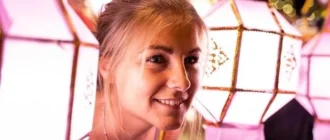The IUCN Red List: A Barometer of Life
As an avid nature enthusiast‚ I’ve always been drawn to the incredible diversity of life on our planet. From the smallest insects to the largest whales‚ every species plays a crucial role in maintaining the delicate balance of our ecosystems. However‚ I’m also acutely aware of the growing threats facing many species‚ pushing them closer to the brink of extinction. That’s where the IUCN Red List comes in‚ serving as a stark reminder of the challenges we face and the urgent need for conservation action.

My Introduction to the Red List
I first encountered the IUCN Red List while researching endangered species for a conservation project. I was struck by the sheer scale of the list and the sobering reality it presented. It wasn’t just a list of names; it was a comprehensive assessment of the conservation status of species worldwide‚ highlighting those at the highest risk of disappearing forever.

Understanding the Categories
The IUCN Red List categorizes species into nine groups based on their risk of extinction. I found the categories to be well-defined and easy to understand:
- Extinct (EX): This category‚ sadly‚ represents species that are no longer with us‚ like the Dodo bird.
- Extinct in the Wild (EW): Species in this category‚ such as the Scimitar-horned Oryx‚ only exist in captivity or outside their natural range.
- Critically Endangered (CR): This is where the alarm bells truly start ringing. Species like the Amur Leopard and Sumatran Orangutan face an extremely high risk of extinction in the wild.
- Endangered (EN): The Green Turtle and Tiger are just two examples of species classified as endangered‚ meaning their numbers are dwindling‚ and their future is uncertain.
- Vulnerable (VU): Species like the African Elephant and Giant Panda are vulnerable to extinction in the wild if threats persist.
- Near Threatened (NT): While not facing immediate danger‚ these species are close to qualifying for a threatened category.
- Least Concern (LC): The most hopeful category‚ representing species that are widespread and abundant‚ for now;
- Data Deficient (DD): There isn’t enough information to assess the risk of extinction for these species.
- Not Evaluated (NE): These species haven’t been evaluated against the Red List criteria.
A Call to Action
The IUCN Red List is more than just a list; it’s a call to action. It’s a reminder that we have a responsibility to protect the incredible biodiversity of our planet. Here’s what I’ve learned and how I’ve incorporated the Red List into my life:
1. Stay Informed:
I regularly visit the IUCN Red List website to stay updated on the latest assessments and conservation news. It’s a valuable resource for understanding the threats facing species and the actions being taken to protect them.
2. Support Conservation Organizations:
I now actively support organizations like the World Wildlife Fund (WWF) and the International Union for Conservation of Nature (IUCN)‚ who are working tirelessly to conserve endangered species and their habitats.
3. Make Informed Choices:
Whether it’s choosing sustainable seafood‚ reducing my carbon footprint‚ or supporting companies with ethical sourcing practices‚ I strive to make choices that benefit the planet and its inhabitants.
4. Spread the Word:
I believe it’s crucial to raise awareness about the importance of biodiversity and the threats facing endangered species. I share information with friends‚ family‚ and on social media to encourage others to join the conservation effort.
The Red List: A Beacon of Hope
While the IUCN Red List paints a stark picture of the challenges facing many species‚ it also offers a glimmer of hope. The list highlights conservation successes‚ demonstrating that with concerted effort‚ we can reverse the trend of biodiversity loss. The recovery of species like the Humpback Whale and the Iberian Lynx serves as a reminder that our actions can make a difference.
The IUCN Red List is a powerful tool for conservation. It provides valuable data that informs conservation policy‚ guides research priorities‚ and mobilizes resources toward protecting the most threatened species. By understanding the Red List and supporting conservation efforts‚ we can all contribute to ensuring that future generations inherit a planet teeming with life.










